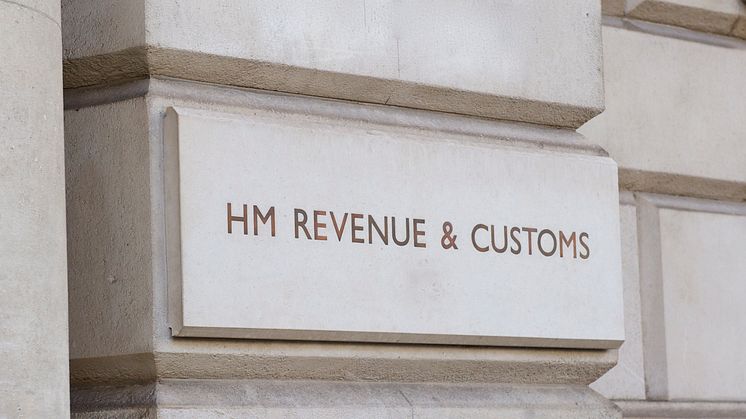
Press release -
UK tax gap falls to 6.5% as HMRC targets the dishonest minority
The UK tax gap fell in 2014-15 to its lowest-ever level of 6.5%, official statistics published today reveal.
The UK’s tax gap, the difference between the amount of tax due and the amount collected, is one of the lowest in the world.
Today’s figures reinforce the significant progress that HMRC has made in reducing the tax gap from 8.3% in 2005-06. If the tax gap had remained at the 2005-06 level of 8.3%, it would have grown to £47 billion and the country would have been £11 billion a year poorer.
This year’s tax gap figures highlight the positive impact that HMRC’s digital transformation is having in making it easier for people to pay the right amount of tax.
In particular, the introduction of Real Time Information for the Pay As You Earn (PAYE) system has led to more accurate recording of information on payroll taxes, and the shift to VAT online has helped bring the VAT gap in 2014-15 to its lowest level of £12.7 billion. The benefits to individuals and businesses will continue to grow as HMRC makes further progress on its digital transformation.
The Financial Secretary to the Treasury, Jane Ellison said:
“This government is committed to tackling tax evasion and avoidance wherever it occurs.
“The UK has one of the lowest tax gaps in the world. By investing £1.8 billion since 2010 in boosting HMRC compliance capabilities, we’ve brought our tax gap down to its lowest ever level. And to make it even easier for people to pay the right tax in the future, we’ve invested £1.3 billion in new digital tools.”
HMRC’s Chief Executive, Jon Thompson, said:
“These figures show we have successfully maintained a downward pressure on the tax gap in 2014-15, while collecting record revenues of £518 billion.
“The UK is an honest and compliant country when it comes to tax, as the vast majority of people and businesses pay what they owe, when they owe it. We should be proud that we meet our obligation as a nation in willingly paying for our public services, which is why we have one of the lowest tax gaps anywhere in the world.
“But if we are to ensure a fairer and more effective tax system, and more money for public services, we must keep up the pressure on the tax gap by relentlessly pursuing the small minority who seek to cheat their taxes through evasion, aggressive avoidance and organised crime.”
HMRC has one of the most robust and transparent tax gap estimates in the world, with its methodology scrutinised by the International Monetary Fund and the National Audit Office. No other country publishes such a level of detail on an annual basis.
In 2014-15, HMRC collected record revenues of almost £518 billion – almost £12 billion more than in the previous year – as a result both of a growing economy and our effectiveness in clamping down on tax evasion and fraud. HMRC also secured almost £27 billion in record compliance yield.
The government has invested an additional £1.8 billion to tackle tax evasion, avoidance and non-compliance since 2010. This includes taking action to clamp down on the organised crime gangs behind the illicit trade in tobacco and alcohol, increasing resourcing on compliance, and an additional £1.3 billion to transform HMRC into one of the most advanced tax administrations in the world.
This action has helped HMRC secure around £130 billion in compliance yield since 2010 and bring in more than £2.5 billion from offshore tax evaders since 2010.
Notes to Editors
1.HMRC’s Measuring Tax Gaps 2016 and methodological annex documents are published here: https://www.gov.uk/government/statistics/measuring-tax-gaps.
2.HMRC’s tax gap estimates are produced in accordance with the Code of Practice for Official Statistics, which assures objectivity and integrity. The methodology is judged by independent third parties to be robust, having been intensively scrutinised and given a clean bill of health by the International Monetary Fund and by the National Audit Office.
3.The UK has one of the lowest tax gaps in the world. The tax gap is 34% in Italy, 23% in Mexico and 16.3% in the USA.
4.Our actions to close the gap include:
- continuing to close the net on offshore hidden wealth: HMRC has brought in more than £2.5 billion from offshore disclosures and other offshore tax evasion initiatives since 2010
- launching more than 100 taskforces targeted at high-risk employment sectors across the UK since May 2011, bringing in more than £404 million
- launching HMRC’s Alcohol Strategy, which is designed to tackle all forms of alcohol fraud.
5. Each year the tax gap is subject to revision due to:
- new or revised economic data
- new data on HMRC’s operations, such as audit cases settled and new data on tax at risk in legal challenges
- methodology changes that improve the estimate
- improved targeting of tax at risk.
The adjustment in the tax gap figures for 2013-14, from £34 billion to £37 billion, largely results from two factors: projected information which has been replaced by actual data, and improved data analysis arising from an upgrade in the way HMRC identifies risk in the Self Assessment system.
6.Tobacco tax gap estimates for 2015-16 are also published today and are available here: https://www.gov.uk/government/statistics/tobacco-tax-gap-estimates. Despite an increase in the illicit tobacco tax gap, made up of tobacco duty and VAT, the market volume of illicit cigarettes has fallen by half since 2005-06.
7. Making Tax Digital – We are introducing digital services that are transforming the way that individuals and businesses pay what they owe and claim entitlements. Small businesses are benefiting from support across a range of digital channels, including webinars, YouTube video tutorials and e-learning packages. By 2020 the tax return will have been abolished in favour of simple, secure and personalised digital tax accounts.
8. The latest tax gap is for 2014-15, although information on HMRC’s record-breaking year in 2015-16 is also available in the department’s Annual Report and Accounts. HMRC raised £537 billion in tax revenues and secured almost £27 billion in compliance yield.
9. Follow HMRC’s Press Office on Twitter @HMRCpressoffice
Related links
Topics
Categories
Issued by HM Revenue & Customs Press Office
HM Revenue & Customs (HMRC) is the UK’s tax authority.
HMRC is responsible for making sure that the money is available to fund the UK’s public services and for helping families and individuals with targeted financial support.

